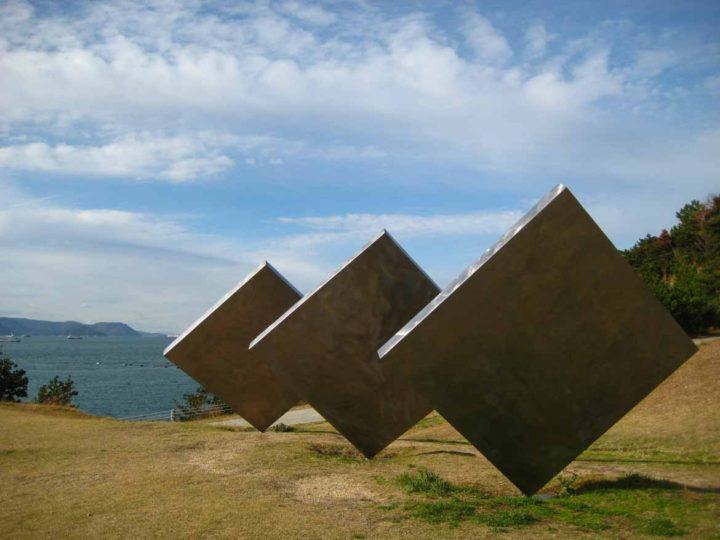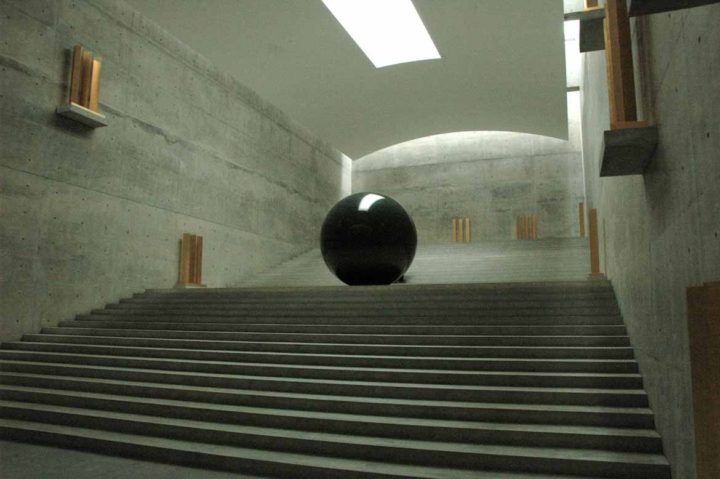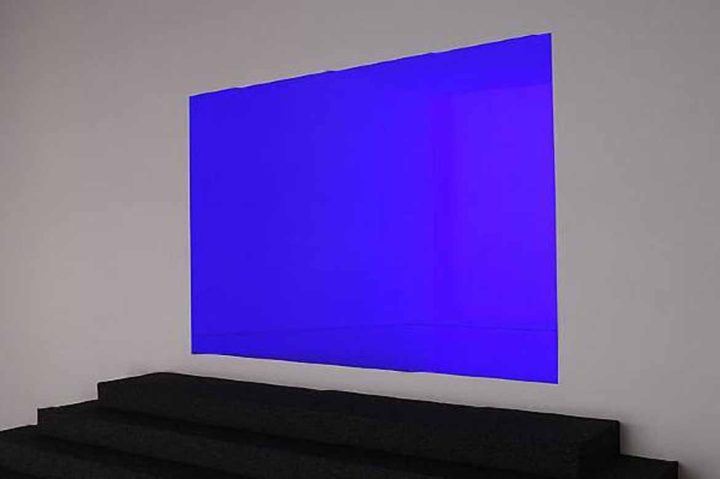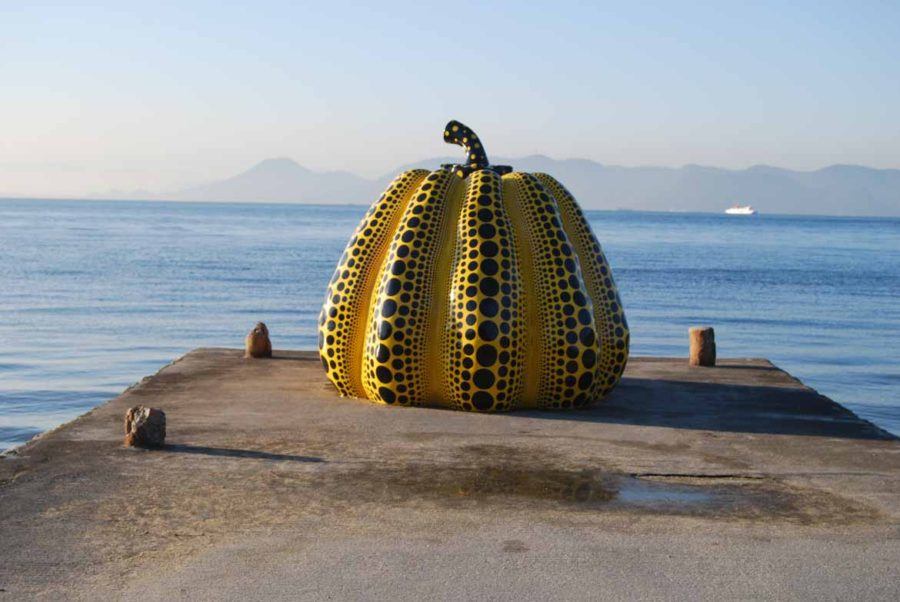Like this post? Help us by sharing it!
Formerly a travel consultant in our Bristol office, Matt became our Sustainable Tourism Officer while working on his masters degree in sustainable development. Here, he tells us about his three favourite installations on Naoshima – commonly known as Japan’s “Art Island”.
As 2016 is the Setouchi Triennale Art Festival, now seems like a fitting time to revisit the weekend I spent on Naoshima in 2014. Naoshima is the largest, and perhaps the most interesting, of the Setouchi art islands. It’s located in Japan’s Inland sea, squeezed between Honshu in the north and Shikoku to the south. Famed for Yayoi Kusama’s yellow pumpkin and Tadao Ando’s striking minimalist architecture, Naoshima is a must visit for any art lovers off on their travels.
Although these things are all subjective I thought I’d give my top three, must-see pieces on the island. I apologise in advance for not including any Japanese artists!
1. Three Vertical Squares Diagonal
George Ricky (1907-2002)
In spite of its utilitarian name, ‘Three Vertical Squares Diagonal’ is a striking, perfectly located sculpture. As its name suggests it is simply made up of three steel squares propped up diagonally on top of a hill, overlooking the inland sea on the southern side of the island. The size of the squares gives the impression of the piece being immovable, however when the sea breeze picks up even the lightest breath of air shifts them like quadrilateral feathers on the wind.
Their wing-like nature give them an aeronautical sense, perhaps harking back to Ricky’s time as an engineer in the US Air Corps during WWII. Listening closely you can hear the structures creaking on their axis as wild kites circle above. If you weren’t to give the piece the time you could easily miss their kinetic secret, but it’s definitely worth sticking around. Sitting beside them makes a perfect spot for a convenience store picnic on a sunny day.

2. Time/Timeless/No Time
Walter De Maria (1935-2013)
Walter De Maria’s sculpture, lit from above by natural light in a subterranean hall in the Chichu Art Museum, feels like a strangely religious veneration of cricket. Its sheer scale, sparse minimalism, and ethereal lighting gives it a church-like feel. This ecclesiastical sense is added to by the complete silence in which the other visitors were making their way around the piece, a silence only punctuated by the quiet scrape of shoes on the concrete floor.
Across the walls are large, golden batons arranged in sets of three – looking like giant cricket stumps. In the centre of the room is a large polished marble sphere. As well as playing the part of a cricket ball in the sporting metaphor it also obscures part of the observer’s view, encouraging you to join the other shuffling visitors up the stairs to take in the installation from a different angle. I’d highly recommend visiting at sunset when the red light beaming in through the skylight adds a moody dimension to the spectacle.

3. Open Field
James Turrell (1943 – )
Open Field was perhaps one of the most surprising and mind-bending pieces of art I’ve ever seen. The experience itself was a little odd. On trying to enter the area of the Chichu Museum where it is located I was asked to wait a moment and join the other visitors making a polite queue beside the door. After waiting a few moments the previous group made their way out of the exhibition space. At this point we were invited to make our way in and remain against the back wall. On the opposite white wall was a flight of black steps, and what appeared to be the projection of a blue square on the wall. After the whole group had assembled the invigilator invited us to explore that space. It was as another member of the group made their way up the steps and walked through what I thought was a solid blue section of wall that I realised that the blue projection was in fact a lit recess in the wall about the size of two rooms in a Toyoko Inn.
I was so thoroughly impressed by the how the piece flips the viewer’s perceptions that I joined the queue outside the space twice more before leaving the Chichu Museum. It was only on my second visit into the blue recess that I noticed that when standing at the back of the blue space, if you look back to the white room through which you entered, as long as no one is making their way up the steps, the white rooms now appears like a white square on a blue wall. It was a genuinely awe-inspiring experience.

Throughout 2016 these, and the many other pieces and galleries on Naoshima, will be joined by a host of other exhibits – so I can’t think of a better time to visit and see some of the best examples of modern art around.
If you would like to visit Naoshima for the 2019 Triennale there are shows running in spring, summer and autumn. Get in touch with our Japan travel experts to find out more.


